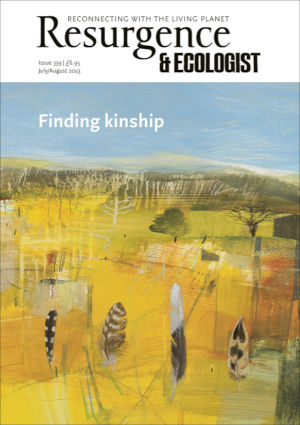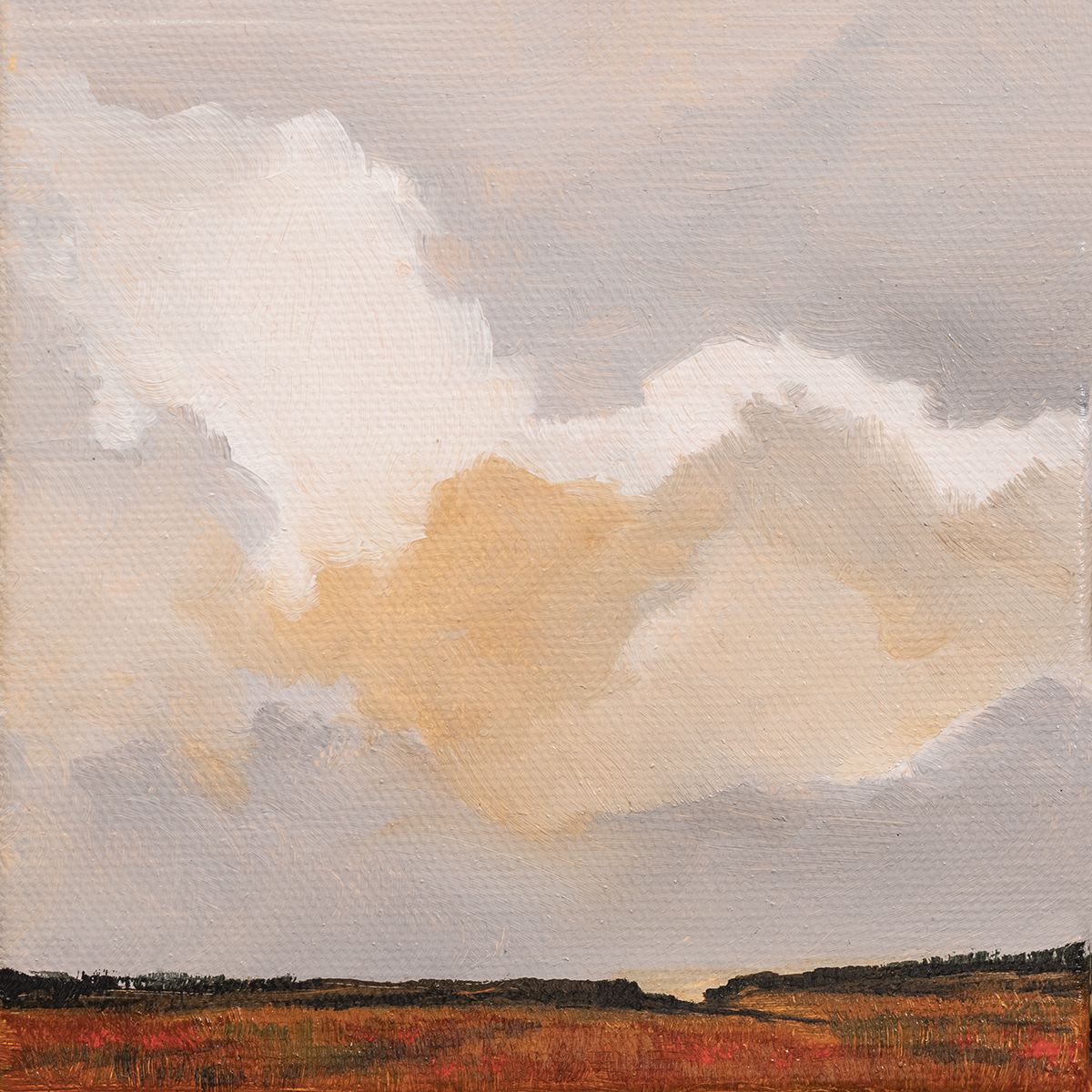Perhaps paradoxically, fiction has always offered a path to connecting with and understanding reality, and there’s a rich tradition of novelists who have written about or emphasised the relationship between their characters and Nature. We might cite Italo Calvino’s The Baron in the Trees and Ursula K. Le Guin’s The Wizard of Earthsea, or Emily Brontë’s Wuthering Heights and Rabindranath Tagore’s The Home and the World as good examples of this expansive mode. We can also bring the American writer Willa Cather’s novels and short stories into the vast bibliography of Nature-inflected fiction. Pursuing and shaping her career in the early decades of the 20th century, Cather was writing at a time of rapid and sizeable US industrialisation. This was also the period in which the US National Park network was becoming defined and protected and enshrined in law through various acts of Congress.
Cather forensically explores the inner and outer lives of her characters, and whilst this might be the quality of her work that is recognised above all others, her fiction also concerns itself with Nature and how cultures relate to it in a variety of ways. She writes about the land and the sky, about the ancient and the new and modern, and we might say that her work also turns on a more cosmic wheel. Threading through it is a delight in Nature, as evidenced in her 1927 novel Death Comes for the Archbishop, set in the desert country of the American Southwest. We read how “the Bishop remembered his first ride to Acoma as his introduction to the mesa country. One thing which struck him at once was that every mesa was duplicated by a cloud mesa, like a reflection, which lay motionless above it or moved slowly up from behind it.”
Here in the UK, Cather remains even now a relatively unknown writer despite her status as a major American novelist whose work resonates internationally whilst being so specifically regionally American. Her writing celebrates and parses the relationship between places and peoples, and she typically explores the lives of characters in relation to the landscape and communities of the flatlands of Nebraska and in the deserts and canyon country of the American Southwest.
Cather charted and critiqued the westward expansion of 20th-century America into Indigenous spaces and cultures. We might say that her writing takes the reader away from the conscious forces of towns and cities and out to the ‘unconscious’ forces of expansive Nature. In this way, it chimes with that of her almost-contemporary Mary Hunter Austin (whom I wrote about for Issue 310 of Resurgence & Ecologist).
Cather conjures the appeal and intricacies of settled western and south-western regions, capturing the delight that we can feel when confronted by the enormity of Nature. This delight certainly manifests itself in Cather’s short story ‘The Enchanted Bluff’, in which a group of boys go out camping. Here’s the narrator describing the moment when the boys watch the moon rising: “We all jumped up to greet it as it swam over the bluffs behind us. It came up like a galleon in full sail; an enormous, barbaric thing, red as an angry heathen god.” In a more muted but no less wonderstruck way, the conclusion of Cather’s short story ‘Neighbour Rosicky’ centres on a moment when a rural doctor looks out over a graveyard and the landscape within which it sits: “He thought of city cemeteries; acres of shrubbery and heavy stone, so arranged and lonely and unlike anything in the living world. Cities of the dead, indeed; cities of the forgotten, of the ‘put away’. But this was open and free, this little square of long grass which the wind for ever stirred.”
In her novel My Ántonia, published in 1918, Cather’s writing attests to the interweaving of both the wondrous and the unnerving in terms of the vast scale of the prairies. The character Jim Burden, who is the narrator, recalls his delight in walking the Nebraska country and recognising a particular emptiness and yet something mesmerising: “I used to love to drift along the pale-yellow cornfields… Sometimes I went south to visit our German neighbours and to admire their catalpa grove, or to see the big elm tree that grew up out of a deep crack in the earth… Trees were so rare in that country, and they had to make such a hard fight to grow, that we used to feel anxious about them, and visit them as if they were persons.” In Cather’s writing, testing landscapes enable communities to come together.
Cather, then, draws out the wonder of Nature and in turn acknowledges the way that natural places and spaces work themselves on human senses and human imagination. There is an evident awe and delight in Nature, but, critically, her writing is not disingenuous or naive. Cather and her narrators find space to recognise the colonisation of the Indigenous communities and the tragedies that came with that process. This becomes part of the context and backdrop for Death Comes for the Archbishop. The novel begins in 1848, a crucial moment in the timeline of the expansion of American territories into Indigenous peoples’ lands. Critically, it concludes in the late 19th century, when the idea of a frontier (between civilisation and wilderness) was understood to have dissolved.
Cather’s attention to varied American landscapes and the cultures living within and with it allowed her to write about Nature as a lens through which to think about the diversity of American experience. It wasn’t just one thing. It was pluralistic. Cather’s novel The Song of the Lark, and its section ‘The Ancient People’, provided her with an opportunity to write with sympathy and respect for Native American culture. Cather hadn’t always been so sensitive. She came to a new recognition over a sustained period of time.
In Cather’s fiction, the land is mesmerising, mystifying, inviting and alienating, and it offers a direct connection back into ancient pasts, archaeology and history writing, all of which are key to her novel The Professor’s House, in which the young Tom Outland – even his name resonates with Nature associations and a life lived beyond certain conventions and traditions – is fascinated by the Indigenous sites of the American Southwest. Here’s an excerpt from the novel, in which Tom expresses his attention to the colours of Nature: “Just across from us, overhanging us, indeed, stood the mesa, a pile of purple rock, all broken out with red sumach and yellow aspens up in the high crevices of the cliffs. From the cabin, night and day, you could hear the river, where it made a bend round the foot of the mesa and churned over the rocks. It was the sort of place a man would like to stay in forever.”
In celebrating the joy that is part of Cather’s Nature writing, we would be remiss if we did not acknowledge her facility in describing Nature’s capacities to unsettle and disturb. It’s not always a pretty and decorous Nature that is being described and valued, but instead something harsher that possesses its own beauty. Nature can be nurturing and cruel and disorientating, and in Cather’s novel O Pioneers! the prairie expanse of the west is hard and uninviting: “The homesteads were few and far apart; here and there a windmill gaunt against the sky… But the great fact was the land itself, which seemed to overwhelm the little beginnings of human society that struggled in its sombre wastes.”
The image of the garden and the wilderness in opposition to each other has long been key to a particular American mythology. In our Anthropocene age, we might say that this binary idea is problematic. Can the writing of a novelist who was born in 1873 help refresh our attention to the tension inherent in this garden/wilderness contrast?
Cather’s writing about Nature and about the human relationship to it expresses both the physical dynamic and the ways in which Nature works itself on human imagination and connections between communities.
Our current moment in time sees us urgently reaching out for stories that can help us continue to recognise and cherish the wonder of Nature. Such stor-ies can also remind us of the degree to which human activity has so imperilled Nature, whilst also being so entirely bound up in it. Willa Cather’s writing is a thread in a vast tapestry of storytelling that expresses Nature’s fragile beauty and the complicated ways in which human experience relates to it.
Postscript: this article is dedicated with great thanks to my university tutor Helen Taylor, who introduced me to Willa Cather’s work.







